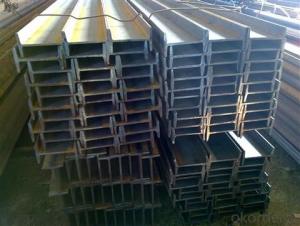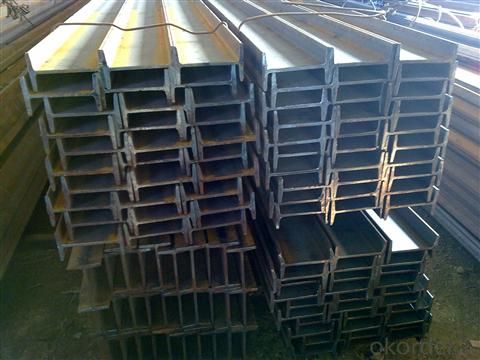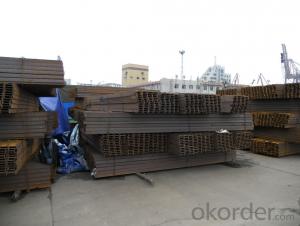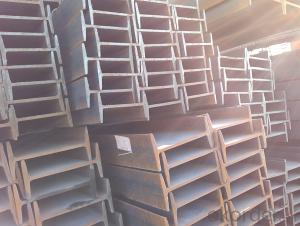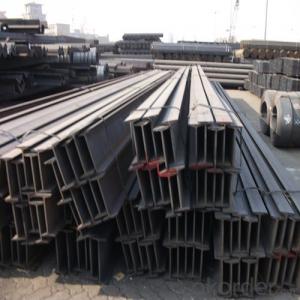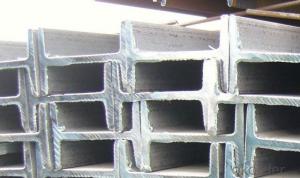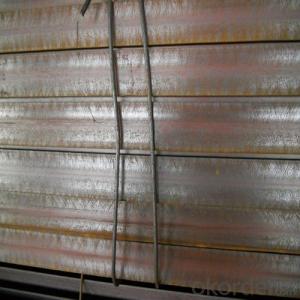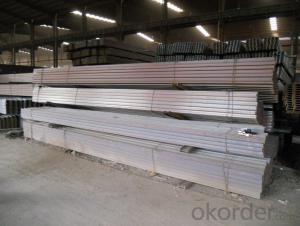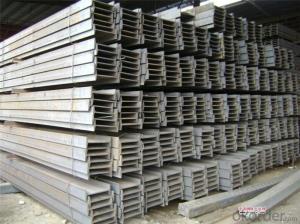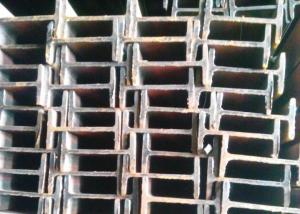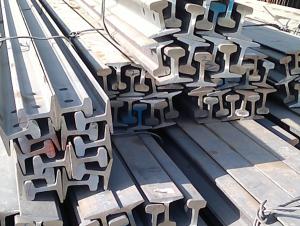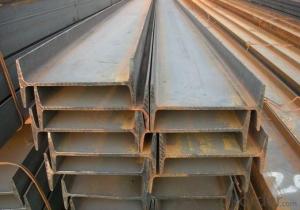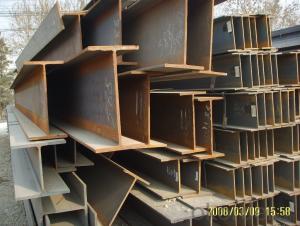Hot rolled Q235 steel I-Beam for construction
- Loading Port:
- Tianjin
- Payment Terms:
- TT or LC
- Min Order Qty:
- 25 m.t.
- Supply Capability:
- 100000 m.t./month
OKorder Service Pledge
OKorder Financial Service
You Might Also Like
Product Description:
OKorder is offering Hot rolled Q235 steel I-Beam for construction at great prices with worldwide shipping. Our supplier is a world-class manufacturer of steel, with our products utilized the world over. OKorder annually supplies products to European, North American and Asian markets. We provide quotations within 24 hours of receiving an inquiry and guarantee competitive prices.
Product Applications:
Hot rolled Q235 steel I-Beam are ideal for structural applications and are widely used in the construction of buildings and bridges, and the manufacturing, petrochemical, and transportation industries.
Product Advantages:
OKorder's Steel I-Beam are durable, strong, and resist corrosion.
Main Product Features:
Premium quality
· Prompt delivery & seaworthy packing (30 days after receiving deposit)
· Corrosion resistance
· Can be recycled and reused
· Mill test certification
· Professional Service
· Competitive pricing
Product Specifications:
1. Invoicing on theoretical weight or actual weight as customer request
2. Standard: EN10025, GB Standard, ASTM
3. Grade: Q235B, Q345B, SS400, ASTM A36, S235JR, S275JR
4. Length: 5.8M, 6M, 9M, 12M as following table
5. Sizes: 80mm-270mm
Dimensions(mm) | |||||
h | b | s | t | Mass Kg/m | |
IPE80 | 80 | 46 | 3.80 | 5.20 | 6.00 |
IPE100 | 100 | 55 | 4.10 | 5.70 | 8.10 |
IPE120 | 120 | 64 | 4.80 | 6.30 | 10.40 |
IPE140 | 140 | 73 | 4.70 | 6.90 | 12.90 |
IPE160 | 160 | 82 | 5.00 | 7.40 | 15.80 |
IPE180 | 180 | 91 | 5.30 | 8.00 | 18.80 |
IPE200 | 200 | 100 | 5.60 | 8.50 | 22.40 |
IPE220 | 220 | 110 | 5.90 | 9.20 | 26.20 |
IPE240 | 240 | 120 | 6.20 | 9.80 | 30.70 |
IPE270 | 270 | 135 | 6.60 | 10.20 | 36.10 |
Appications of IPE Beam
1. Supporting members, most commonly in the house raising industry to strengthen timber bears under houses. Transmission line towers, etc
2. Prefabricated structure
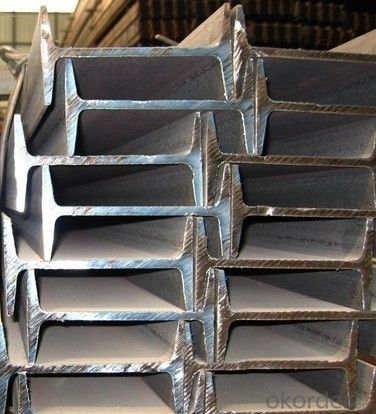
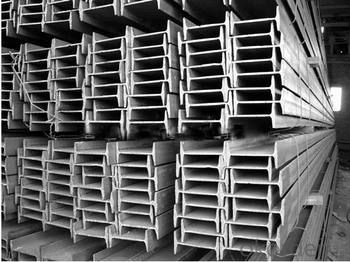

FAQ:
Q1: How soon can we receive the product after purchase?
A1: Within three days of placing an order, we will begin production. The specific shipping date is dependent upon international and government factors, but is typically 7 to 10 workdays.
Q2: What makes stainless steel stainless?
A2: Stainless steel must contain at least 10.5 % chromium. It is this element that reacts with the oxygen in the air to form a complex chrome-oxide surface layer that is invisible but strong enough to prevent further oxygen from "staining" (rusting) the surface. Higher levels of chromium and the addition of other alloying elements such as nickel and molybdenum enhance this surface layer and improve the corrosion resistance of the stainless material.
- Q: Are steel I-beams more cost-effective compared to other types of beams?
- Yes, steel I-beams are generally considered more cost-effective compared to other types of beams. This is because steel is a durable, strong, and versatile material that offers excellent load-bearing capacity and long-term performance. Additionally, steel I-beams are readily available, easy to install, and require minimal maintenance, resulting in reduced overall costs.
- Q: Relationship between H steel and I-beam, C section steel and channel steel
- 1, whether ordinary I-shaped steel is mainly type or light, because the section size are relatively high and narrow, so the moment of inertia of the main sections of the two sleeve is larger * so, generally only can be directly used in the web plane bending member or the composition of lattice stress component. It is not suitable for the axial compression member or the bent member perpendicular to the web plane, which has great limitations in its application2 and H steel is a kind of high efficiency economic section profile (other cold bending thin wall steel, pressed steel plate, etc.), because of the reasonable cross-section shape, they can make steel more effective, improve the cutting capacity. Unlike ordinary I-beam, wing embroidery of H steel is widened, and the inner and outer surfaces are usually parallel, so that it is possible to connect the high strength spiral with other components. Its size constitutes a reasonable series, complete model, easy to design and use. H type steel rolling is different from ordinary I-beam with only one set of horizontal roll, the wing sash is wide and has no inclination (or inclination is to be very small), a group of vertical roll and roll. Therefore, the rolling process and equipment are more complex than the ordinary rolling mill.
- Q: What are the different types of steel coatings available for I-beams?
- There are several types of steel coatings available for I-beams, including galvanized coatings, epoxy coatings, and polyurethane coatings.
- Q: What are the common challenges faced when using steel I-beams in construction?
- In construction, the utilization of steel I-beams presents several common challenges. One of these challenges pertains to the weight and size of the beams. The beams themselves can be exceedingly heavy and large, thereby complicating their transportation and installation. Achieving accurate placement and positioning necessitates the utilization of specialized equipment and techniques. Furthermore, the beams' size can impose limitations on design flexibility and necessitate careful planning to ensure proper fit and alignment. Another challenge involves the potential for deflection and sagging. Under load, steel I-beams have the capacity to experience deflection, which can undermine the overall integrity and stability of the structure. To minimize deflection, it is imperative to conduct proper calculations and engineering analysis to ascertain the appropriate size and spacing of the beams. Corrosion represents a significant challenge as well when employing steel I-beams. Steel is prone to rusting and corrosion, particularly in environments characterized by high humidity or exposure to moisture. Regular maintenance and the application of protective coatings are indispensable measures for preventing deterioration and prolonging the beams' lifespan. Fire resistance emerges as another challenge in the context of steel I-beams. Although steel is a non-combustible material, it can lose its strength and structural integrity when subjected to high temperatures. Consequently, the implementation of fire protection measures, such as fire-resistant coatings or the use of fireproofing materials, becomes necessary to ensure the safety and structural stability of the building. Lastly, cost can prove to be a challenge when employing steel I-beams. In comparison to other construction materials, steel can be more expensive, which can impact the overall project budget. Moreover, the need for specialized equipment, coatings, and fire protection measures can further inflate the cost of utilizing steel I-beams in construction. In summary, despite the numerous advantages offered by steel I-beams in terms of strength and durability, their utilization in construction is accompanied by several challenges. Successfully overcoming these challenges and ensuring the effective implementation of steel I-beams in construction projects demands meticulous planning, engineering analysis, maintenance, and budgeting.
- Q: What are the potential cost savings associated with using steel I-beams?
- There are several potential cost savings associated with using steel I-beams in construction projects. Firstly, steel I-beams are known for their high strength-to-weight ratio, meaning they can carry heavy loads while using less material compared to other alternatives. This leads to cost savings in terms of reduced material costs and transportation expenses. Additionally, steel I-beams are durable and resistant to decay, pests, and fire. This means they have a longer lifespan compared to other materials, resulting in lower maintenance and replacement costs over time. Moreover, steel I-beams are relatively quick and easy to install, especially when compared to traditional construction methods. This can lead to significant time savings, which in turn can translate into reduced labor costs. Furthermore, steel is a highly recyclable material. If the need arises to remodel or demolish a structure that uses steel I-beams, the beams can be efficiently recycled and reused. This not only reduces waste but also potentially lowers the overall environmental impact of the project. Lastly, steel I-beams are readily available in standard sizes, which can help streamline the construction process and minimize the need for custom fabrication. This standardization can result in cost savings due to reduced lead times and increased efficiency in production. In summary, the potential cost savings associated with using steel I-beams include reduced material and transportation costs, lower maintenance and replacement expenses, quicker installation times, recyclability, and increased production efficiency.
- Q: Can steel I-beams be used for architectural canopies or awnings?
- Yes, steel I-beams can be used for architectural canopies or awnings. They provide strong structural support and can be customized to meet specific design requirements, making them a suitable choice for such applications.
- Q: What are the considerations for steel I-beam design in corrosive saltwater environments?
- When it comes to designing steel I-beams for corrosive saltwater environments, there are several crucial factors that must be considered: 1. Material Selection: The choice of steel for the I-beams is of utmost importance in preventing corrosion. Stainless steel is often the preferred option due to its high resistance to corrosion in saltwater environments. Specifically, austenitic stainless steels like 316 or 316L are commonly utilized because they contain a higher molybdenum content, which enhances their corrosion resistance. 2. Coatings and Protection: Enhancing the I-beams' resistance to corrosion can be achieved by applying protective coatings. Zinc-rich coatings, such as hot-dip galvanizing or zinc spraying, create a barrier between the steel and saltwater, preventing direct contact and reducing the risk of corrosion. Additionally, epoxy coatings or specialized marine paints can be used to provide an extra layer of protection. 3. Design Considerations: Proper drainage and avoidance of areas where water can accumulate or stagnate are crucial in corrosive saltwater environments. Incorporating drainage holes or sloped surfaces allows saltwater to flow away from the beams, preventing pooling and potential corrosion. 4. Maintenance and Inspection: Regular maintenance and inspection are essential to ensure the long-term performance of steel I-beams in saltwater environments. This includes monitoring for signs of corrosion, such as rust or pitting, and promptly addressing any issues that arise. Additionally, regular cleaning and rinsing with fresh water can help remove salt deposits and reduce the risk of corrosion. 5. Environmental Factors: When designing the I-beams, it is important to consider the specific conditions of the saltwater environment. Factors such as temperature, salinity, and exposure to sunlight can all affect the rate of corrosion. Conducting a thorough site assessment and consulting with corrosion experts can provide valuable insights into the specific requirements for the steel I-beam design. By considering these important aspects, engineers can design steel I-beams that can withstand the corrosive effects of saltwater environments, ensuring their long-term durability and performance.
- Q: What are the considerations for accessibility and universal design with steel I-beams?
- When considering accessibility and universal design with steel I-beams, several factors need to be taken into consideration. Firstly, it is important to ensure that the steel I-beams are designed and installed following the relevant accessibility guidelines and standards. This includes complying with building codes and regulations that address accessibility requirements for individuals with disabilities. These guidelines may vary depending on the country or region, so it is crucial to be familiar with the specific requirements in the project's location. Secondly, the size and positioning of the steel I-beams should be carefully planned to allow for easy movement and navigation within the space. This involves considering clearances and widths that accommodate wheelchair users and individuals with mobility aids. The I-beams should not obstruct pathways or create barriers that impede accessibility. Moreover, the material and finish of the steel I-beams should be chosen with accessibility in mind. It is important to consider factors such as slip resistance, visibility, and ease of gripping. Non-slip coatings or textured finishes can be applied to the I-beams to prevent accidents caused by slippery surfaces. Additionally, contrasting colors can be used to make the I-beams more visible for individuals with visual impairments. Furthermore, if the steel I-beams are part of a structure that requires ramps or elevators for accessibility, they need to be properly integrated into the design. The I-beams should support the weight of these features and ensure their stability and safety. Inclusive design is another crucial consideration when it comes to accessibility and universal design with steel I-beams. Inclusive design focuses on creating environments that can be used by people of all abilities and ages. It is important to involve individuals with disabilities or accessibility needs in the design process to ensure that their perspectives and requirements are taken into account. Overall, accessibility and universal design considerations for steel I-beams encompass compliance with regulations, proper sizing and placement, appropriate material selection, integration with accessibility features, and inclusive design practices. By incorporating these considerations, steel I-beams can help create spaces that are accessible to everyone, promoting inclusivity and equal access for all individuals.
- Q: Can steel I-beams be used in parking garages or structures?
- Yes, steel I-beams are commonly used in parking garages and structures due to their high strength and load-bearing capacity. They provide structural support and can withstand heavy loads, making them suitable for such applications.
- Q: Can Steel I-Beams be used for agricultural buildings?
- Certainly, agricultural buildings can indeed utilize steel I-beams. Renowned for their robustness and longevity, steel I-beams prove to be an ideal choice for supporting extensive agricultural structures. They are frequently employed in the construction of barns, stables, storage facilities, and other agricultural edifices. With their exceptional load-bearing capacities, steel I-beams can effortlessly withstand the demands of heavy equipment, machinery, and storage necessities commonly found in agricultural operations. Moreover, steel's resistance to pests, fire, and decay renders it a dependable option for agricultural buildings that must endure harsh environmental conditions. Furthermore, the versatility and ease of assembly of steel I-beams enable flexible designs that can adapt to diverse agricultural requirements.
Send your message to us
Hot rolled Q235 steel I-Beam for construction
- Loading Port:
- Tianjin
- Payment Terms:
- TT or LC
- Min Order Qty:
- 25 m.t.
- Supply Capability:
- 100000 m.t./month
OKorder Service Pledge
OKorder Financial Service
Similar products
Hot products
Hot Searches
Related keywords
